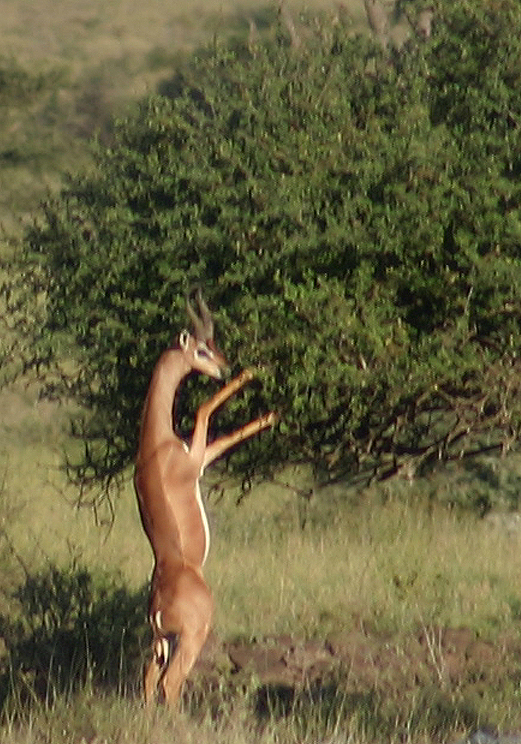
We spent the entire morning of Day 4 on the Cronan family safari in Samburu. I’ve always loved the place, and this morning was no exception.
We weren’t even out of the private Kalama Reserve when we spotted kudu. This beautiful large antelope is quite common in southern Africa but hard to see here. It was a real treat and an indication that for some reason they’re an animal that doesn’t like the big protected game parks.
We had been in the Samburu reserve for too long when we saw lots of lion tracks along the dry river bed that begins near the old airstrip. We followed them in circles, actually, there were so many, until in the not too far distance we saw a small collection of vehicles.
Sure enough, it was three female lion screwing up another hunt. They all looked very desperate and hungry. It was one fully grown female and two nearly fully grown female cubs. When we arrived they were stalking gerenuk! That’s hardly an hors d’oeuvres for them but they obviously had had a number of failures during the night.
We left them and almost immediately saw a large, satisfied male cheetah resting in shade. The rest of the morning was equally rewarding, with three sightings of martial eagle, East Africa’s second largest and in my opinion, most awesome raptor. It has a funny, squared head because of its feather configuration, which looks like a astronaut’s helmet (minus its impressive beak!)
But throughout the game drive we saw the terrible destruction that the February flood had on the park. The roads were a mess. There were huge caverns in some places making passage impossible. The river is still twice its normal width, and dead trees were everywhere. The beautiful thick forests that used to run along and out from the embankment have been seriously compromised.
But it was at the bridge which connects the western part of the reserve with Buffalo Springs to the south that you could see exactly how horrible it had been.
The main cement bridge itself is still standing and looks pretty good. But the slopes up to it on both the south and north sides have been entirely swept away, and the steel railing bent completely under itself, in some places ripped out of the concrete.
The power of this flood had to be unimaginable.
If the Samburu authorities work quickly before the routine of not using the bridge etches its way into safari culture, then the important attraction for all of us being able to visit both reserves will be preserved. If they wait, itineraries will be adjusted and it could take years before the interest in Samburu recovers.
Similar to the bridge, the work on the lodges and camps that were washed away continues but doesn’t seem to be progressing too quickly. We talked with managers and workers at Larsen’s, Intrepid’s and Samburu Lodge, and they all looked exhausted but admitted they were far behind schedule.
Samburu is a magical place. The private sector is working tirelessly to rebuild this Kenyan masterpiece. Not it’s the government authorities turn to rebuild the roads and bridges.